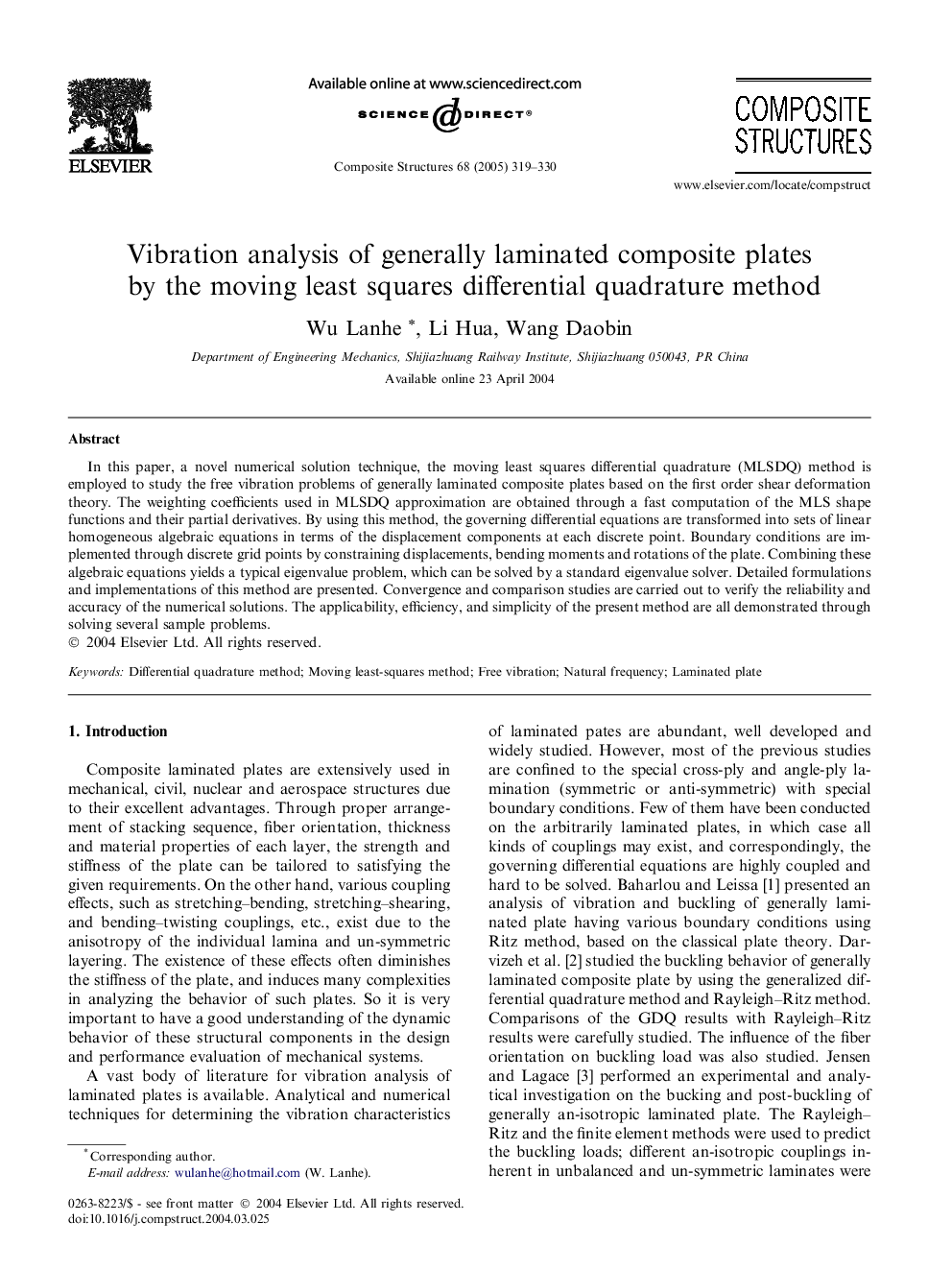| Article ID | Journal | Published Year | Pages | File Type |
|---|---|---|---|---|
| 10284022 | Composite Structures | 2005 | 12 Pages |
Abstract
In this paper, a novel numerical solution technique, the moving least squares differential quadrature (MLSDQ) method is employed to study the free vibration problems of generally laminated composite plates based on the first order shear deformation theory. The weighting coefficients used in MLSDQ approximation are obtained through a fast computation of the MLS shape functions and their partial derivatives. By using this method, the governing differential equations are transformed into sets of linear homogeneous algebraic equations in terms of the displacement components at each discrete point. Boundary conditions are implemented through discrete grid points by constraining displacements, bending moments and rotations of the plate. Combining these algebraic equations yields a typical eigenvalue problem, which can be solved by a standard eigenvalue solver. Detailed formulations and implementations of this method are presented. Convergence and comparison studies are carried out to verify the reliability and accuracy of the numerical solutions. The applicability, efficiency, and simplicity of the present method are all demonstrated through solving several sample problems.
Keywords
Related Topics
Physical Sciences and Engineering
Engineering
Civil and Structural Engineering
Authors
Wu Lanhe, Li Hua, Wang Daobin,
